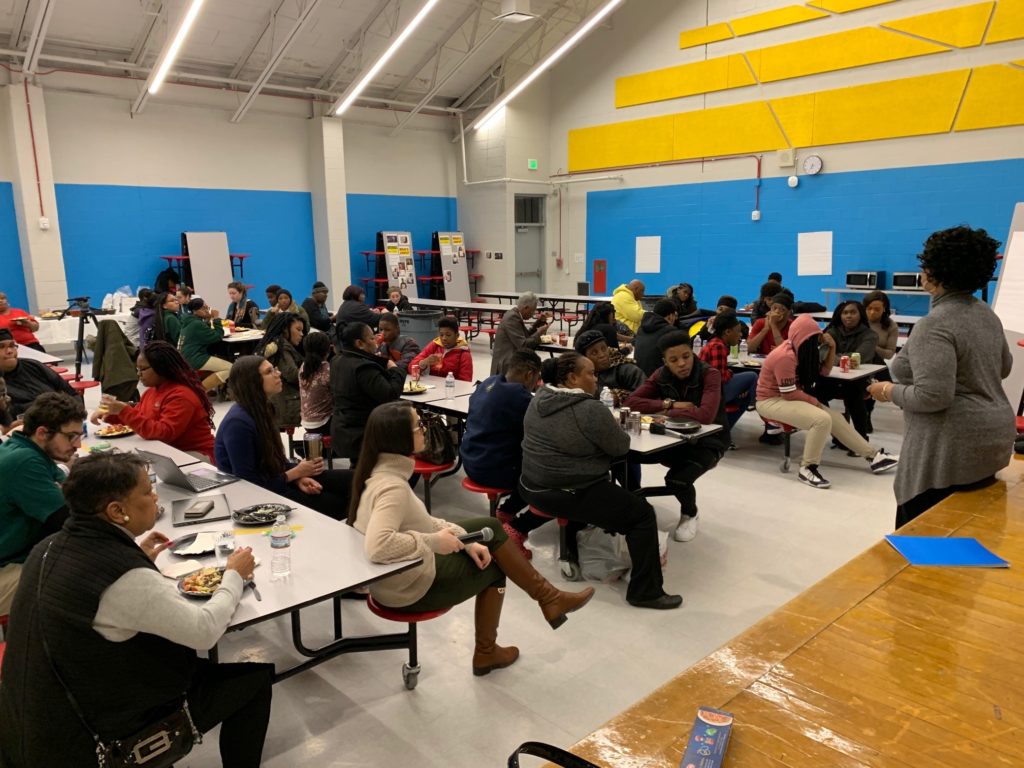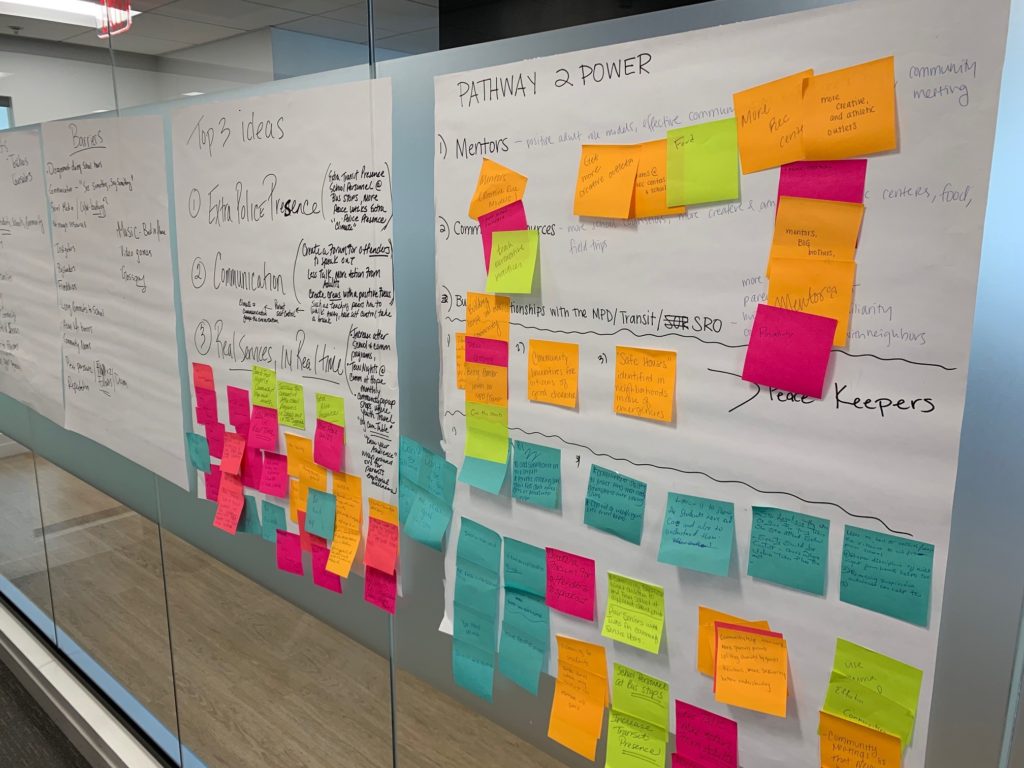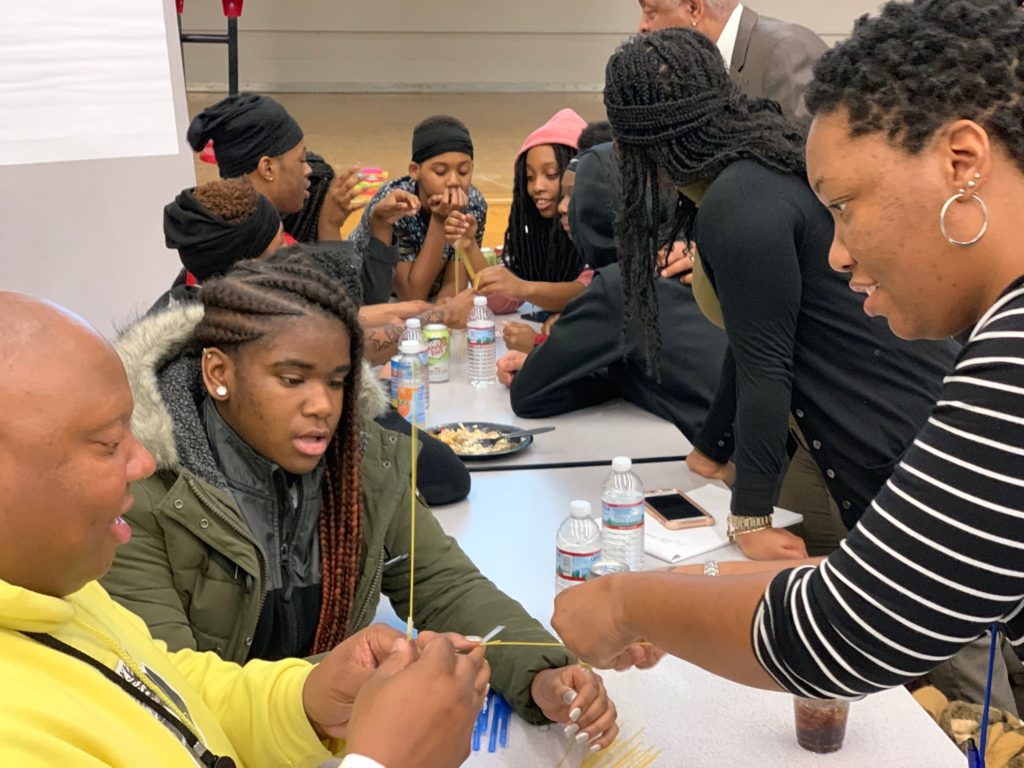We know that when communities come together, change is possible. That’s why on March 5th, KIPP DC and the Deputy Mayor for Education’s office brought together more than 100 families, students, staff, and community members to identify and solve challenges related to safe passage. Using a design thinking approach, participants identified community assets and resources along with potential barriers to student safe passage in their zone. From there, participants teamed up to ideate solutions and build of the ideas of others using collaborative techniques such as “yes and”.
During this activity, participants learned the abstract concept of “Yes And” through a paired activity where groups where asked to create a new, innovative version of a typical household item (microwave). Participants then used what they learned in that activity, and applied it to the team identified recommendations. The purpose of this activity was to prepare teams to contribute to ideas without the fear of the word no, which can cause distrust and fear among group participants.
By the end of the night, the group identified the three following recommendations:
- Identify safe walking routes that are routinely patrolled by law enforcement or community organizations.
- Provide training to officers to help foster positive interactions with students
- Provide community building opportunities with students, Metropolitan Police Department, School Resource Officers, and Transit Officers (basketball games, ropes courses…)
- Identify “Safe Houses” on safe walking routes in neighborhoods in case of emergency
- Create a communication structure to notify all parties of hot spots or potential activity before it happens.
- Identify point of contact for schools, Metropolitan Police Department, Transit Police, School Resource Officers, Community Organization
- Create system where students can anonymously notify personnel of potential dangers before it happens
- Send communications to students of system
- Assign school personnel to designated hot spot locations



